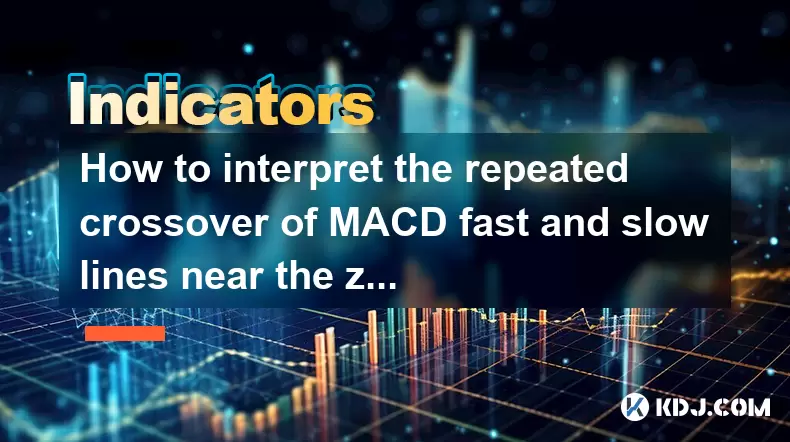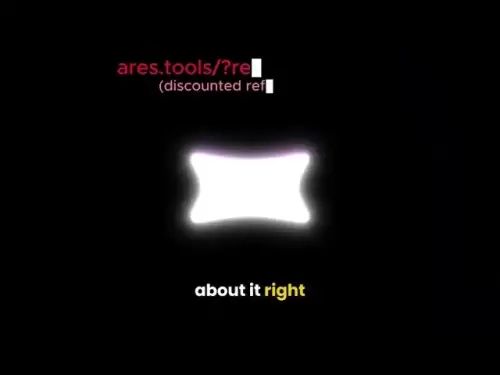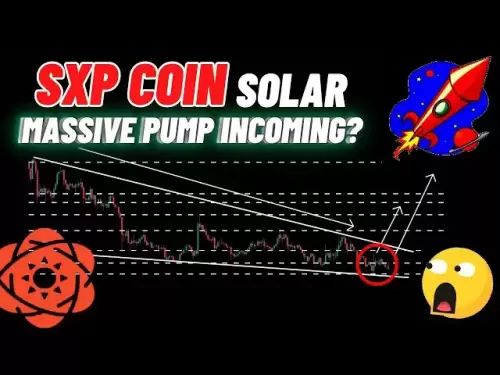-
 Bitcoin
Bitcoin $117500
2.04% -
 Ethereum
Ethereum $3759
3.02% -
 XRP
XRP $3.171
3.30% -
 Tether USDt
Tether USDt $1.000
0.03% -
 BNB
BNB $782.4
2.52% -
 Solana
Solana $187.2
5.62% -
 USDC
USDC $0.0000
0.02% -
 Dogecoin
Dogecoin $0.2380
5.26% -
 TRON
TRON $0.3175
1.07% -
 Cardano
Cardano $0.8227
4.03% -
 Hyperliquid
Hyperliquid $44.50
5.44% -
 Sui
Sui $4.020
10.07% -
 Stellar
Stellar $0.4396
6.28% -
 Chainlink
Chainlink $18.32
4.55% -
 Hedera
Hedera $0.2628
10.71% -
 Bitcoin Cash
Bitcoin Cash $554.8
4.90% -
 Avalanche
Avalanche $24.20
4.60% -
 Litecoin
Litecoin $113.7
2.31% -
 Shiba Inu
Shiba Inu $0.00001413
5.99% -
 UNUS SED LEO
UNUS SED LEO $8.984
0.11% -
 Toncoin
Toncoin $3.326
7.22% -
 Ethena USDe
Ethena USDe $1.001
0.00% -
 Uniswap
Uniswap $10.49
4.56% -
 Polkadot
Polkadot $4.092
4.02% -
 Monero
Monero $326.6
1.30% -
 Dai
Dai $1.000
-0.01% -
 Bitget Token
Bitget Token $4.570
2.49% -
 Pepe
Pepe $0.00001267
5.10% -
 Aave
Aave $297.3
3.10% -
 Cronos
Cronos $0.1344
4.10%
How to interpret the repeated crossover of MACD fast and slow lines near the zero axis?
Repeated MACD crossovers near the zero axis often signal market indecision, requiring confirmation from price action and volume to avoid false signals.
Jul 26, 2025 at 07:35 am

Understanding the MACD Indicator Structure
The Moving Average Convergence Divergence (MACD) is a momentum oscillator widely used in cryptocurrency trading to identify trend direction, strength, and potential reversals. It consists of three main components: the MACD line, the signal line, and the histogram. The MACD line is derived by subtracting the 26-period Exponential Moving Average (EMA) from the 12-period EMA. The signal line is a 9-period EMA of the MACD line. The histogram visualizes the difference between the MACD line and the signal line. When the MACD line crosses above the signal line, it generates a bullish signal; when it crosses below, it indicates bearish momentum.
A crucial reference point in the MACD chart is the zero axis, which represents the equilibrium between the 12-period and 26-period EMAs. When the MACD line is above zero, short-term momentum is stronger than long-term momentum, suggesting bullish sentiment. Conversely, when it's below zero, bearish sentiment dominates. The area around the zero axis is particularly sensitive because it reflects a transitional phase in market momentum.
Significance of Repeated Crossovers Near the Zero Axis
Repeated crossovers of the MACD fast line (MACD line) and the slow line (signal line) near the zero axis often indicate market indecision or consolidation. This behavior suggests that neither buyers nor sellers are gaining sustained control. In the context of cryptocurrency markets, which are known for high volatility and frequent sentiment shifts, such crossovers may reflect short-term noise rather than a definitive trend change.
When the MACD line fluctuates around the zero line and repeatedly crosses the signal line, it typically occurs during sideways price movements or within tight trading ranges. These repeated signals can generate false entries if interpreted as strong buy or sell indications. Traders must assess whether these crossovers are occurring in a low-volatility environment or during a broader consolidation phase following a significant price move.
It is essential to distinguish between valid trend-confirming crossovers and choppy, repetitive crossovers. A crossover that occurs far from the zero axis, especially after a sustained trend, carries more weight. In contrast, crossovers clustering near zero often lack follow-through and may mislead traders relying solely on MACD signals.
Contextual Analysis: Price Action and Volume Correlation
To interpret repeated crossovers accurately, traders must correlate MACD behavior with price action and trading volume. For instance, if the price is moving sideways with minimal volume, the crossovers likely reflect low conviction trading. However, if the price begins to form higher lows or shows tight candlestick patterns, the repeated crossovers might precede a breakout.
Examine the candlestick structure around each crossover:
- Are the candles small with short wicks, indicating hesitation?
- Is there a gradual compression in price range, suggesting coiling?
- Does volume increase on bullish crossovers and decrease on bearish ones?
If volume surges during a crossover above the signal line while price breaks above a recent swing high, the signal gains credibility. Conversely, if volume remains flat or declines during a crossover, the move may lack sustainability. In cryptocurrency trading, where low liquidity pairs are common, volume analysis becomes even more critical to filter out noise.
Using Additional Filters to Confirm MACD Signals
Relying solely on MACD crossovers near the zero axis is risky. Integrating complementary indicators improves signal reliability. Consider combining MACD with:
- Relative Strength Index (RSI): Helps identify overbought or oversold conditions. If RSI is near 50 and fluctuating, it confirms indecision, aligning with MACD crossovers near zero.
- Bollinger Bands: When price is within the middle band and bands are narrowing, it supports consolidation, making repeated crossovers less actionable.
- Support and Resistance Levels: A crossover occurring near a known support level may carry more bullish weight, especially if the price bounces off that level.
Another effective method is applying a moving average filter. For example, only consider bullish crossovers when the price is above the 50-period Simple Moving Average (SMA). This adds a trend bias and reduces false signals. In cryptocurrency markets, where pump-and-dump schemes are common, such filters help avoid traps set by manipulative volume spikes.
Step-by-Step Interpretation Framework
To systematically evaluate repeated MACD crossovers near the zero axis, follow this structured approach:
- Observe the location of the MACD lines: Confirm they are oscillating within a narrow band around the zero line, not trending strongly above or below.
- Count the number of crossovers in a defined period (e.g., 24–48 hours). More than three crossovers suggest chop.
- Check the histogram: If the histogram bars are short and alternating in sign, momentum is weak.
- Analyze price structure: Look for consolidation patterns like triangles, rectangles, or flags.
- Monitor volume trends: Declining volume during crossovers reinforces lack of conviction.
- Wait for a breakout confirmation: Only act when price closes decisively outside the consolidation range with strong volume.
This framework prevents impulsive decisions and aligns MACD interpretation with broader market context. In fast-moving crypto markets, patience in waiting for confirmation can prevent losses from false breakouts.
Practical Example in a Cryptocurrency Chart
Consider a scenario on the BTC/USDT 4-hour chart. After a sharp decline, Bitcoin enters a consolidation phase between $60,000 and $61,500. During this period, the MACD line crosses the signal line five times within a 72-hour window, all near the zero axis. The histogram shows small, alternating bars. Volume is 30% below the 30-day average.
Each bullish crossover fails to push price above $61,500. Each bearish crossover doesn’t break $60,000. Eventually, price breaks above $61,500 on a 2x average volume candle. Simultaneously, the MACD line surges above both the signal line and zero axis. This confirms a valid bullish breakout, transforming prior crossovers into signs of accumulation.
This example illustrates that earlier crossovers were noise, while the final move, supported by volume and price action, was signal.
Frequently Asked Questions
What does it mean when the MACD lines cross multiple times near zero but never move far from it?
This behavior typically indicates low momentum and market consolidation. It suggests traders are uncertain, and no dominant trend is emerging. Such conditions often precede breakouts, but until price confirms direction, the crossovers should not be traded aggressively.
Can repeated MACD crossovers near zero predict reversals?
Not reliably. While they may occur before a reversal, they more commonly reflect ongoing indecision. A true reversal signal requires additional confirmation, such as a strong candlestick pattern, breakout from a key level, or divergence between price and MACD.
Should I adjust MACD settings to reduce false crossovers in crypto trading?
Some traders modify the default settings (e.g., using 24/12/9 instead of 26/12/9) to smooth the lines. However, this may delay signals. A better approach is to keep default settings and use price-based filters like support/resistance or moving averages to validate crossovers.
How do I differentiate between a genuine trend start and a fakeout after zero-axis crossovers?
Focus on follow-through price action. A genuine trend shows consecutive candles in one direction, increasing volume, and closes near session highs (for uptrends) or lows (for downtrends). Fakeouts lack volume support and quickly reverse into the prior range.
Disclaimer:info@kdj.com
The information provided is not trading advice. kdj.com does not assume any responsibility for any investments made based on the information provided in this article. Cryptocurrencies are highly volatile and it is highly recommended that you invest with caution after thorough research!
If you believe that the content used on this website infringes your copyright, please contact us immediately (info@kdj.com) and we will delete it promptly.
- Vaultz Capital's Bitcoin Bet: A Strategic Shift on the Aquis Exchange
- 2025-07-26 20:30:12
- Pi Coin, Wallet Features, and Coinbase: What's the Buzz?
- 2025-07-26 18:30:12
- Worldcoin, Punisher Coin, and the Meme Coin Mania: What's the Haps?
- 2025-07-26 18:30:12
- Conviction, Justice System, and Murders: A Look at Recent Cases and Shifting Perspectives
- 2025-07-26 18:50:11
- Shiba Inu, Remittix, and the Market Surge: What's the Hype?
- 2025-07-26 19:10:12
- Cardano Price, ADA Holders, and Leadership Criticism: What's the Real Deal?
- 2025-07-26 19:30:12
Related knowledge

What does it mean that the rebound is blocked after the moving average is arranged in a short position for the first time?
Jul 26,2025 at 10:51am
Understanding the Short-Term Moving Average ConfigurationWhen traders refer to a 'short position arrangement' in moving averages, they are describing ...

What does it mean that the parabolic indicator and the price break through the previous high at the same time?
Jul 26,2025 at 07:22pm
Understanding the Parabolic Indicator (SAR)The Parabolic SAR (Stop and Reverse) is a technical analysis tool developed by J. Welles Wilder to identify...

What does it mean when the price rises along the 5-day moving average for five consecutive days?
Jul 26,2025 at 08:07am
Understanding the 5-Day Moving Average in Cryptocurrency TradingThe 5-day moving average (5DMA) is a widely used technical indicator in cryptocurrency...

What does it mean when ADX breaks through 25 and +DI continues to rise?
Jul 26,2025 at 07:00pm
Understanding the ADX Indicator and Its ThresholdsThe Average Directional Index (ADX) is a technical analysis tool used to measure the strength of a t...

What does it mean when the price breaks through the 60-day moving average with a large volume but shrinks the next day?
Jul 26,2025 at 06:01am
Understanding the 60-Day Moving Average in Cryptocurrency TradingThe 60-day moving average (60DMA) is a widely used technical indicator in the cryptoc...

What does the sudden rise of ADX in DMI accompanied by +DI crossing -DI indicate?
Jul 26,2025 at 01:21pm
Understanding the DMI and Its Core ComponentsThe Directional Movement Index (DMI) is a technical analysis tool used to determine the presence and stre...

What does it mean that the rebound is blocked after the moving average is arranged in a short position for the first time?
Jul 26,2025 at 10:51am
Understanding the Short-Term Moving Average ConfigurationWhen traders refer to a 'short position arrangement' in moving averages, they are describing ...

What does it mean that the parabolic indicator and the price break through the previous high at the same time?
Jul 26,2025 at 07:22pm
Understanding the Parabolic Indicator (SAR)The Parabolic SAR (Stop and Reverse) is a technical analysis tool developed by J. Welles Wilder to identify...

What does it mean when the price rises along the 5-day moving average for five consecutive days?
Jul 26,2025 at 08:07am
Understanding the 5-Day Moving Average in Cryptocurrency TradingThe 5-day moving average (5DMA) is a widely used technical indicator in cryptocurrency...

What does it mean when ADX breaks through 25 and +DI continues to rise?
Jul 26,2025 at 07:00pm
Understanding the ADX Indicator and Its ThresholdsThe Average Directional Index (ADX) is a technical analysis tool used to measure the strength of a t...

What does it mean when the price breaks through the 60-day moving average with a large volume but shrinks the next day?
Jul 26,2025 at 06:01am
Understanding the 60-Day Moving Average in Cryptocurrency TradingThe 60-day moving average (60DMA) is a widely used technical indicator in the cryptoc...

What does the sudden rise of ADX in DMI accompanied by +DI crossing -DI indicate?
Jul 26,2025 at 01:21pm
Understanding the DMI and Its Core ComponentsThe Directional Movement Index (DMI) is a technical analysis tool used to determine the presence and stre...
See all articles

























































































